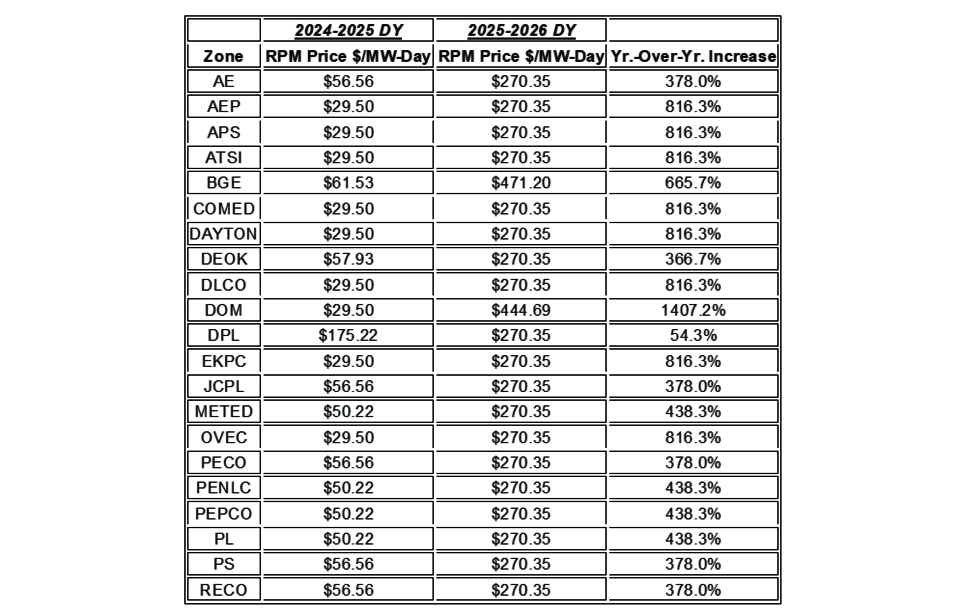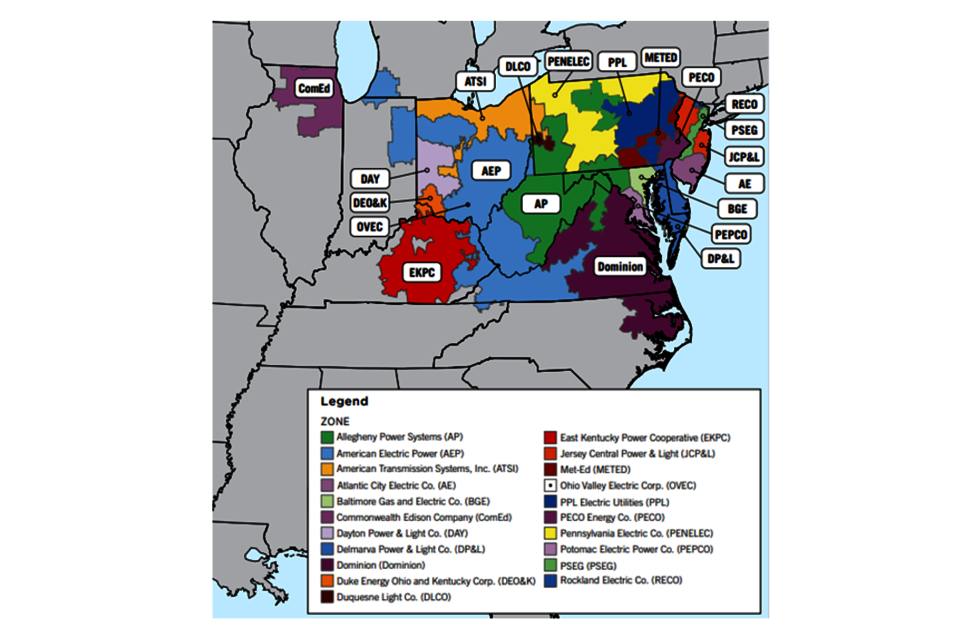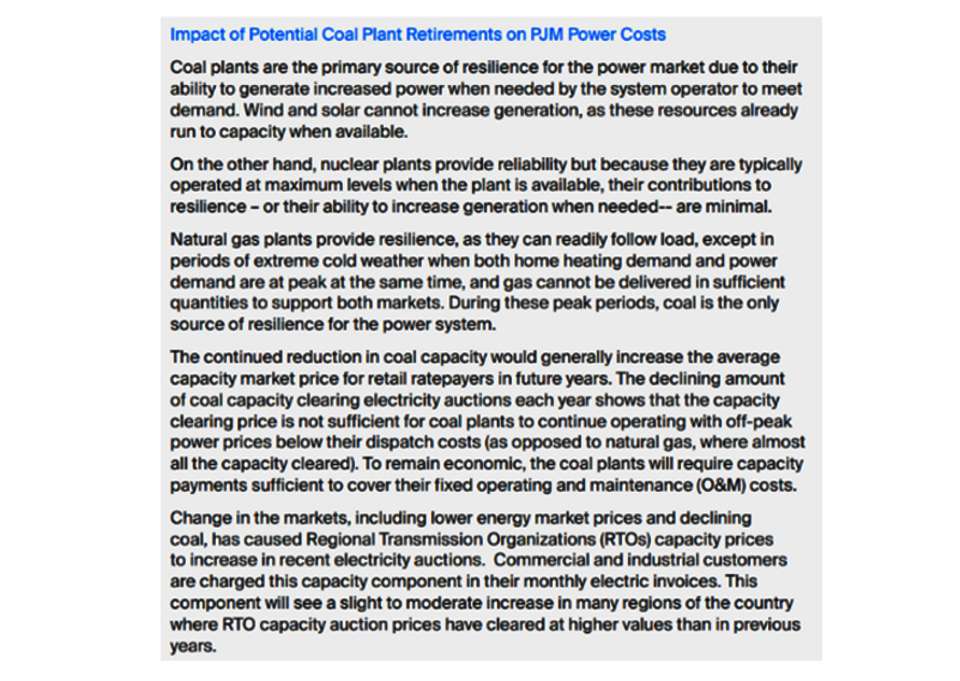PJM capacity prices set to increase significantly

PJM capacity prices surge for 2025-2026
Key takeaways
On July 31, 2024, the PJM Interconnection announced that the cost of capacity for most of its utilities will increase from around $29/MW-Day to $270/MW-Day, or over 800%, on June 1, 2025. The increase is driven by power plant retirements and load growth. The higher capacity costs will impact all customers within the PJM footprint, regardless of whether they are supplied by a utility or a retail supplier. Most retail suppliers will pass through the increase using agreement provisions. For utility-supplied customers, increases will occur through tariff changes or rate filings.
Corporations currently enrolled in demand response programs in PJM, which can lower their peak load contribution (PLC) for next June, will reduce the impact of the capacity cost increase on their energy bills. Corporations that join demand response programs starting next June may also receive material payments. Please contact Trio to learn more about demand response options for their PJM facilities to offset incoming costs. Our Energy Optimization Services team leverages both traditional demand side strategies and newly available supply side initiatives to ensure optimum facility performance and lower operating costs.
Trio insights
The PJM Interconnection posted the latest results of their capacity auction, which establishes the cost of capacity for all members. The table below highlights how the individual PJM zones (utility service territories) are impacted by this increase in capacity costs.

It is important to note that all ratepayers within the PJM footprint are affected by this increase. Most retail suppliers will have the ability to pass through the increase using agreement provisions. For utility supplied customers, increases will occur through tariff changes, either by updating riders or filing for bundled rate changes with their state public utility commission.
What is PJM?
The PJM Interconnection, or simply PJM, is an Independent System Operator (ISO) which oversees interstate transmission of electricity, reliability planning, and expansion for 20+ utilities located along the Eastern portion of the U.S.

What is capacity?
Capacity is the mechanism to establish the electric grid’s long-term reliability. PJM needs to ensure the generation (supply) in a particular area meets the aggregated demand of all customers. Capacity costs in PJM are based on a 3-year forward auction (RPM) that establishes the price of capacity. The price of capacity changes every June 1st and last 12 months, ending on May 31st. In recent years, auction delays caused the 3-year forward schedule to erode, which is why there is a 9-month notice of the price of capacity starting June 1, 2025. Capacity costs are demand based ($/kW or $/MW) and every customer has their own peak load contribution value, called PLCs or tags (measured in kW or MW). PLCs are established during PJM peak days in which electric usage is at its maximum. Like capacity prices, PLCs also change every June 1st.
Why is this happening now?
As coal generation resources have retired, they have not been replaced as rapidly as expected with other generation resources. Generation undersupply is caused by a variety of factors, such as capital investment needs, interconnection delays, and market signals. Trio highlighted this trend in our March 2022 Monthly Monitor report. In addition to the supply side challenges, utilities and ISOs across the U.S. are indicating demand growth driven by data center growth and increasing electrification efforts.
How does this news impact my electric supply?
The capacity cost increase does not mean your electric bill will increase by the same percentage. Capacity is only a portion of your electric supply and can range anywhere from 0% to 50% of your overall supply costs. Since capacity costs are based on demand (kW), the way a facility uses electricity can determine its share of total expenses. Please consult your supply advisor to learn more about specific site or budget impacts.
What can I do to mitigate the impact to my utility bill?
Because the increase is taking place next June, there is little room to maneuver. Customers that are currently participating in demand response (DR) programs in PJM, which could result in lower PLCs for next June, will experience a smaller impact to their utility bills. Likewise, customers that successfully participate in DR programs starting next June may see material payments. Please contact Trio to learn more about DR viability for your PJM facilities.

